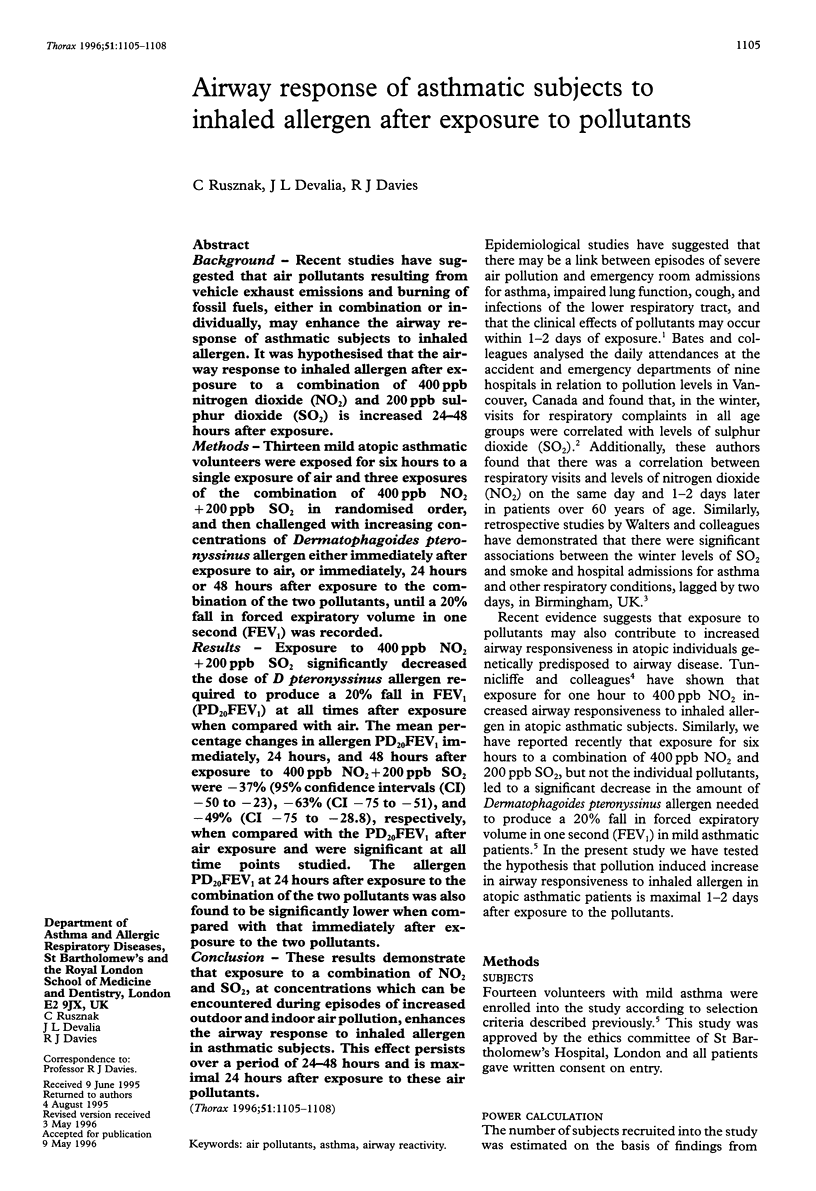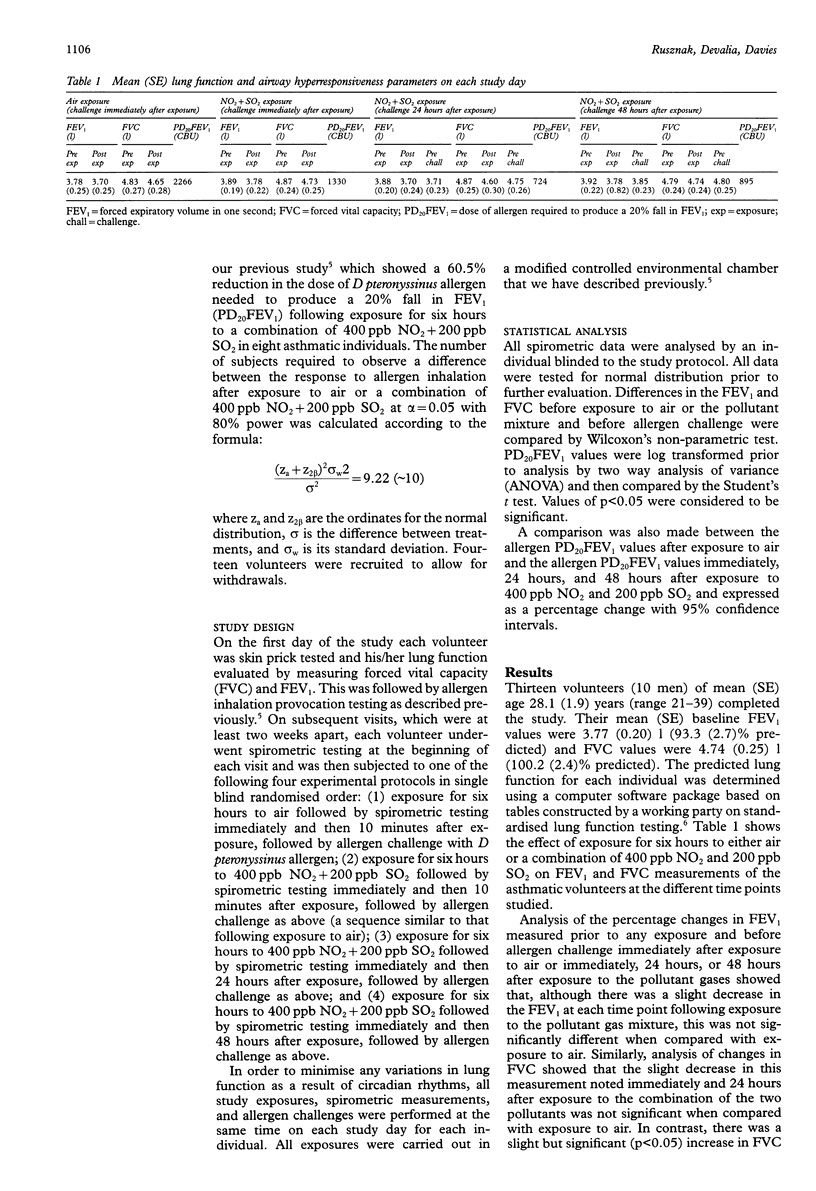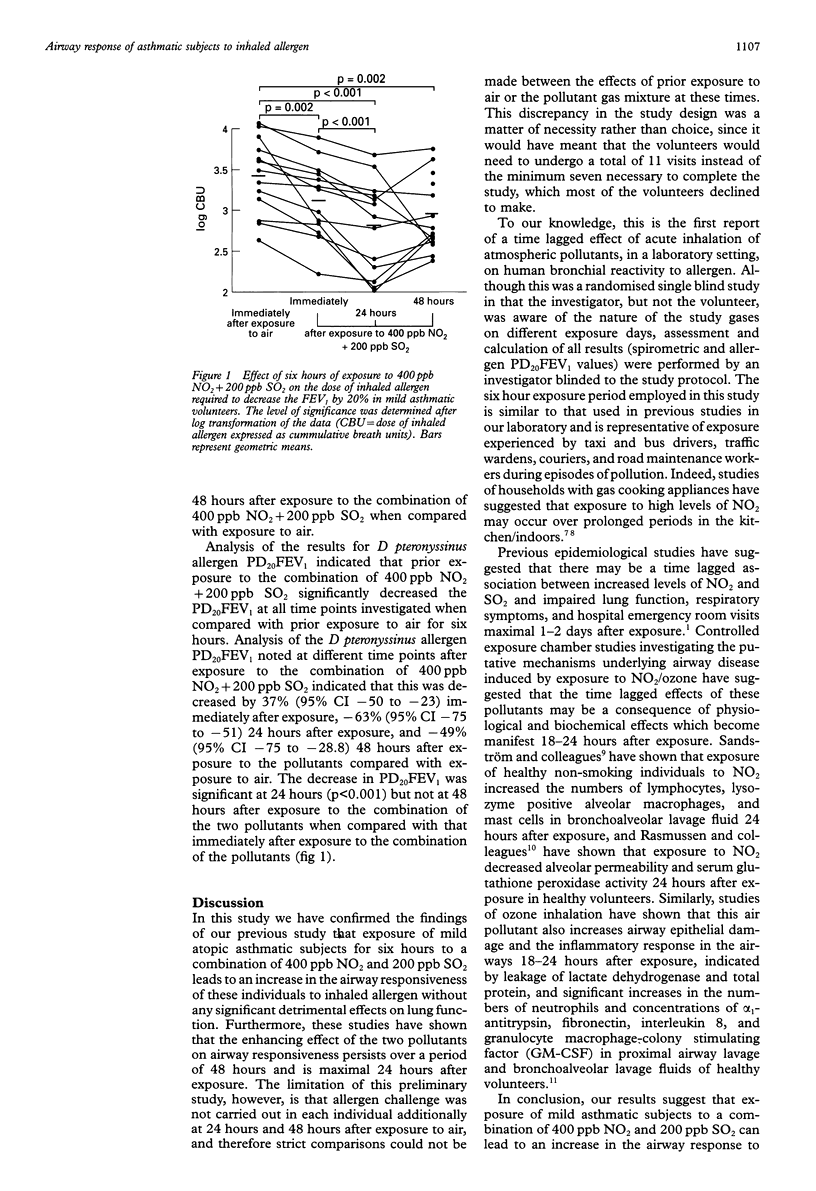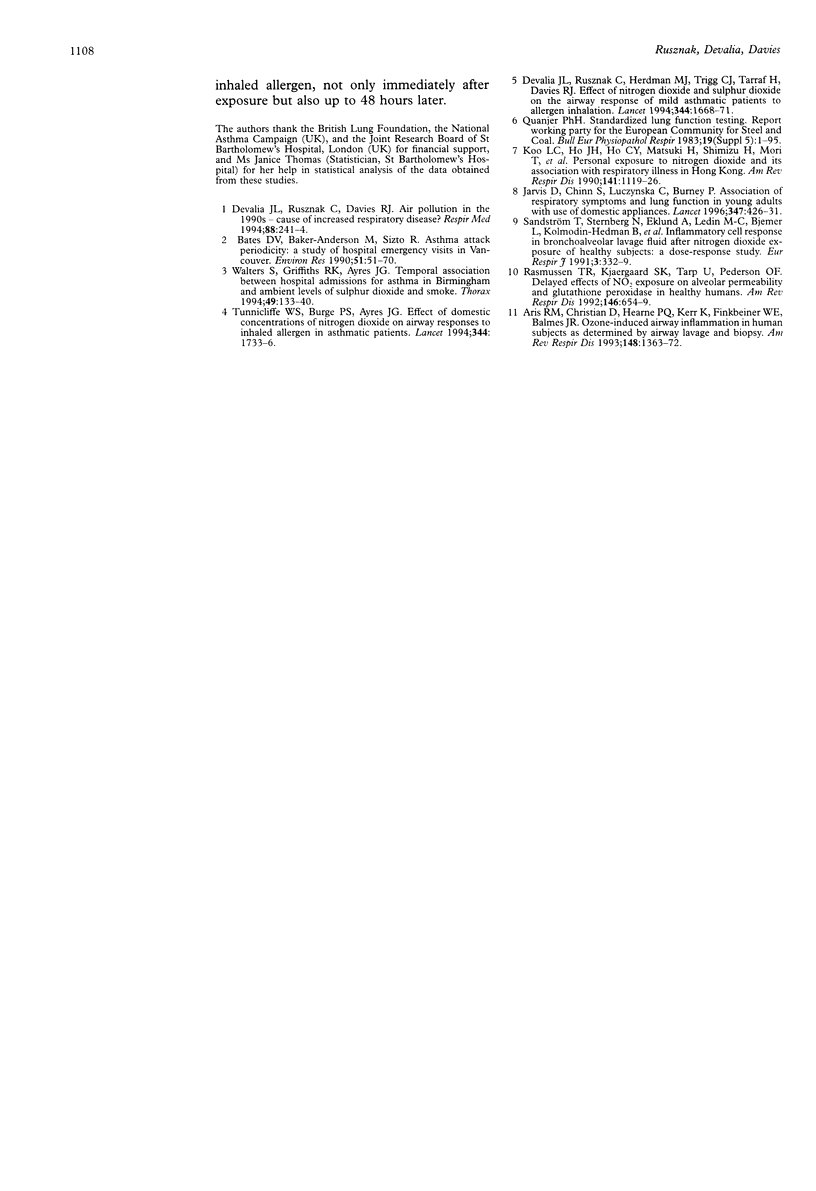Abstract
BACKGROUND: Recent studies have suggested that air pollutants resulting from vehicle exhaust emissions and burning of fossil fuels, either in combination or individually, may enhance the airway response of asthmatic subjects to inhaled allergen. It was hypothesised that the airway response to inhaled allergen after exposure to a combination of 400 ppb nitrogen dioxide (NO2) and 200 ppb sulphur dioxide (SO2) is increased 24-48 hours after exposure. METHODS: Thirteen mild atopic asthmatic volunteers were exposed for six hours to a single exposure of air and three exposures of the combination of 400 ppb NO2 + 200 ppb SO2 in randomised order, and then challenged with increasing concentrations of Dermatophagoides pteronyssinus allergen either immediately after exposure to air, or immediately, 24 hours or 48 hours after exposure to the combination of the two pollutants, until a 20% fall in forced expiratory volume in one second (FEV1) was recorded. RESULTS: Exposure to 400 ppb NO2 + 200 ppb SO2 significantly decreased the dose of D pteronyssinus allergen required to produce a 20% fall in FEV1 (PD20FEV1) at all times after exposure when compared with air. The mean percentage changes in allergen PD20FEV1 immediately, 24 hours, and 48 hours after exposure to 400 ppb NO2 + 200 ppb SO2 were -37% (95% confidence intervals (CI) -50 to -23), -63% (CI -75 to -51), and -49% (CI -75 to -28.8), respectively, when compared with the PD20FEV1 after air exposure and were significant at all time points studied. The allergen PD20FEV1 at 24 hours after exposure to the combination of the two pollutants was also found to be significantly lower when compared with that immediately after exposure to the two pollutants. CONCLUSION: These results demonstrate that exposure to a combination of NO2 and SO2, at concentrations which can be encountered during episodes of increased outdoor and indoor air pollution, enhances the airway response to inhaled allergen in asthmatic subjects. This effect persists over a period of 24-48 hours and is maximal 24 hours after exposure to these air pollutants.
Full text
PDF



Selected References
These references are in PubMed. This may not be the complete list of references from this article.
- Aris R. M., Christian D., Hearne P. Q., Kerr K., Finkbeiner W. E., Balmes J. R. Ozone-induced airway inflammation in human subjects as determined by airway lavage and biopsy. Am Rev Respir Dis. 1993 Nov;148(5):1363–1372. doi: 10.1164/ajrccm/148.5.1363. [DOI] [PubMed] [Google Scholar]
- Bates D. V., Baker-Anderson M., Sizto R. Asthma attack periodicity: a study of hospital emergency visits in Vancouver. Environ Res. 1990 Feb;51(1):51–70. doi: 10.1016/s0013-9351(05)80182-3. [DOI] [PubMed] [Google Scholar]
- Devalia J. L., Rusznak C., Davies R. J. Air pollution in the 1990s--cause of increased respiratory disease? Respir Med. 1994 Apr;88(4):241–244. doi: 10.1016/0954-6111(94)90052-3. [DOI] [PubMed] [Google Scholar]
- Devalia J. L., Rusznak C., Herdman M. J., Trigg C. J., Tarraf H., Davies R. J. Effect of nitrogen dioxide and sulphur dioxide on airway response of mild asthmatic patients to allergen inhalation. Lancet. 1994 Dec 17;344(8938):1668–1671. doi: 10.1016/s0140-6736(94)90458-8. [DOI] [PubMed] [Google Scholar]
- Jarvis D., Chinn S., Luczynska C., Burney P. Association of respiratory symptoms and lung function in young adults with use of domestic gas appliances. Lancet. 1996 Feb 17;347(8999):426–431. doi: 10.1016/s0140-6736(96)90009-4. [DOI] [PubMed] [Google Scholar]
- Koo L. C., Ho J. H., Ho C. Y., Matsuki H., Shimizu H., Mori T., Tominaga S. Personal exposure to nitrogen dioxide and its association with respiratory illness in Hong Kong. Am Rev Respir Dis. 1990 May;141(5 Pt 1):1119–1126. doi: 10.1164/ajrccm/141.5_Pt_1.1119. [DOI] [PubMed] [Google Scholar]
- Rasmussen T. R., Kjaergaard S. K., Tarp U., Pedersen O. F. Delayed effects of NO2 exposure on alveolar permeability and glutathione peroxidase in healthy humans. Am Rev Respir Dis. 1992 Sep;146(3):654–659. doi: 10.1164/ajrccm/146.3.654. [DOI] [PubMed] [Google Scholar]
- Sandström T., Stjernberg N., Eklund A., Ledin M. C., Bjermer L., Kolmodin-Hedman B., Lindström K., Rosenhall L., Angström T. Inflammatory cell response in bronchoalveolar lavage fluid after nitrogen dioxide exposure of healthy subjects: a dose-response study. Eur Respir J. 1991 Mar;4(3):332–339. [PubMed] [Google Scholar]
- Tunnicliffe W. S., Burge P. S., Ayres J. G. Effect of domestic concentrations of nitrogen dioxide on airway responses to inhaled allergen in asthmatic patients. Lancet. 1994 Dec 24;344(8939-8940):1733–1736. doi: 10.1016/s0140-6736(94)92886-x. [DOI] [PubMed] [Google Scholar]
- Walters S., Griffiths R. K., Ayres J. G. Temporal association between hospital admissions for asthma in Birmingham and ambient levels of sulphur dioxide and smoke. Thorax. 1994 Feb;49(2):133–140. doi: 10.1136/thx.49.2.133. [DOI] [PMC free article] [PubMed] [Google Scholar]


